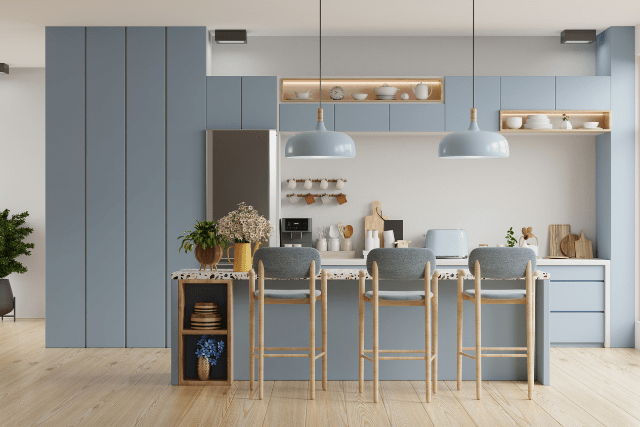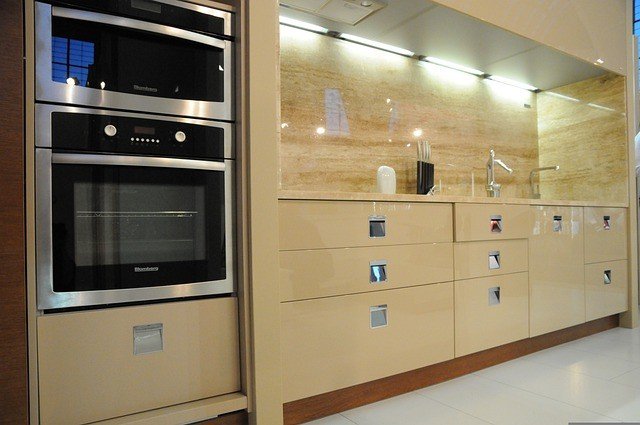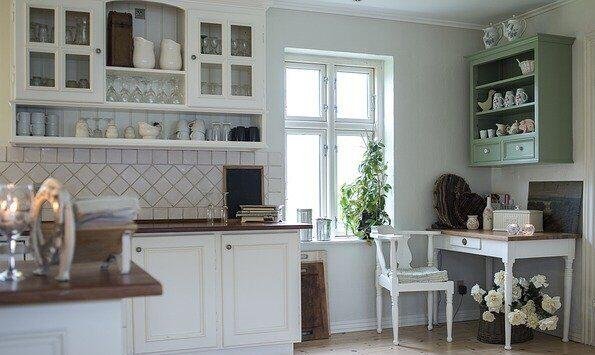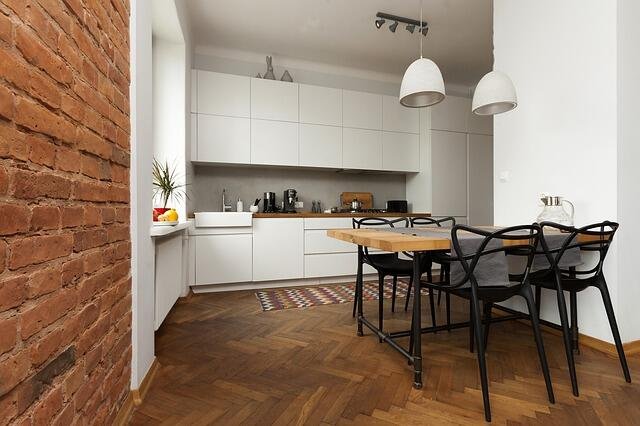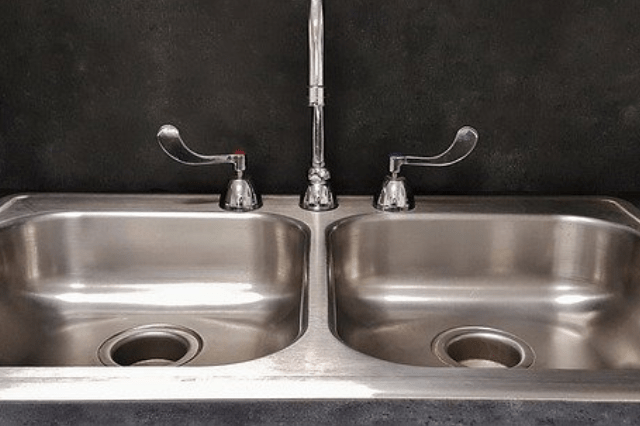Are you looking to upgrade the lighting in your kitchen? This comprehensive guide covers everything you need to know, from types of lighting to choosing the right fixtures to installation and maintenance.
Why should you consider upgrading the kitchen lighting?
Don’t let poor lighting hold your kitchen back any longer. There are several reasons why you might consider upgrading your kitchen lighting:
Improved functionality
One of the most significant benefits of upgrading your kitchen lighting is improved visibility and functionality. With the proper lighting, you can enhance the visibility of your kitchen, making it easier to see your ingredients, cook, and clean up afterwards. You can also choose lights to emphasize specific areas, like the countertop and sink. This will make it easier for you to work in the kitchen and complete tasks quickly.
Aesthetics
Improved Aesthetics One of the most significant advantages of upgrading kitchen lighting is its improved aesthetics. Whether you are looking for modern fixtures to give your kitchen a contemporary feel or rustic fixtures to add a touch of charm, plenty of lighting options are available to help create the perfect ambience. By changing your lighting fixtures, you can instantly transform your space and give it a unique look and feel.
Increased Safety
In addition to the aesthetic benefits, kitchen lighting upgrades can also improve safety. Installing the latest LED lighting fixtures can help ensure your kitchen is well-lit, reducing the risk of accidental falls or spills. Additionally, LED lighting produces less heat than traditional bulbs, reducing the risk of burns or fires.
Personalization
Choosing new lighting fixtures is an excellent opportunity to personalize your kitchen and make it a space that reflects your style and taste. Many lighting fixtures are available, ranging from traditional chandeliers to modern pendant lights.
You can choose fixtures that complement the overall design of your kitchen, or you can mix and match different styles to create a unique look. With so many options available, you can find lighting fixtures that reflect your style.
Energy efficiency
If your current lighting fixtures are outdated or inefficient, upgrading to more energy-efficient options can save you money on your energy bills and reduce your carbon footprint. By replacing traditional bulbs with LED lighting, you can reduce your energy consumption and save money on your electricity bill. Furthermore, LED bulbs last much longer than conventional bulbs, so you won’t have to worry about constantly replacing them.
Removing damaged or outdated fixtures
If your current fixtures are damaged or outdated, upgrading to new ones can improve the look of your kitchen and ensure that your lighting is safe and reliable. Obsolete fixtures can also make your kitchen look dated and unappealing. Upgrading to new fixtures can give your kitchen a fresh, modern look and help it to feel more welcoming and inviting.
Increased Home Value
Finally, upgrading kitchen lighting can also help increase the value of your home. Not only can new lighting fixtures improve the overall look and feel of your kitchen, but they can also help to make your home more attractive to potential buyers. Furthermore, the energy savings associated with LED lighting can be a significant selling point for prospective buyers.
It’s generally a good idea to consider upgrading your kitchen lighting if you’re planning a renovation or looking to refresh the feel of the kitchen space.
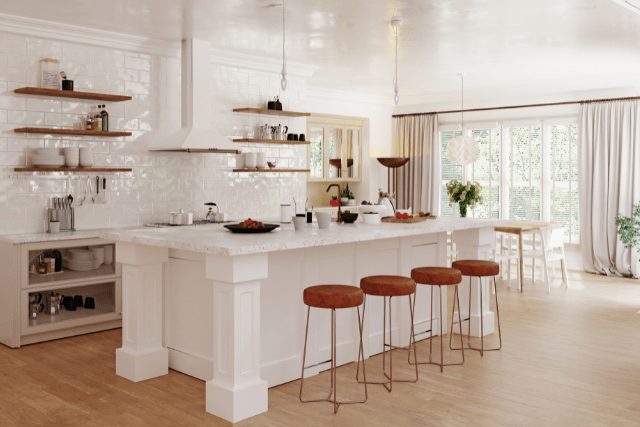
Types of kitchen lighting
There are several types of kitchen lighting to consider when planning your upgrade. These include:
Ambient lighting
Ambient lighting, or general lighting, is the primary source of light in a room and is used to illuminate the entire space. The baseline lighting level is used to create a comfortable and functional environment.
Several types of fixtures can be used for ambient lighting in the kitchen, including:
Ceiling fixtures: Ceiling fixtures, such as chandeliers or pendant lights, provide a broad source of light that illuminates the entire room. They are a good choice for creating a warm and welcoming atmosphere in the kitchen.
Wall sconces: Wall sconces are fixtures mounted on the wall and provide indirect lighting. They are a good choice for adding ambient lighting to the kitchen without taking up valuable counter or floor space.
Track lighting: Track lighting consists of a series of fixtures mounted on a track and can be positioned to direct light where needed. It is a versatile option for ambient lighting in the kitchen and can be used to highlight specific features or areas of the space.
When choosing ambient lighting fixtures for the kitchen, it’s essential to consider the size and layout of the space, as well as your personal lighting preferences. Be sure to select fixtures that are appropriately sized for the area and provide the right light for your needs.
Task lighting
Task lighting is an essential aspect of kitchen lighting. It refers to lighting designed to illuminate specific tasks, such as cooking, cleaning, or food prep. Proper task lighting can make these tasks more accessible and more efficient by providing enough light to see what you’re doing. It can also help to reduce eye strain and fatigue.
Installing new lighting fixtures that provide better task lighting in specific areas of your kitchen can be especially helpful. For example, installing pendant lights over the stove or sink can provide direct illumination for these areas, making it easier to see what you’re doing.
Under cabinet, lights can also be a good option for providing task lighting on countertops and other surfaces. You can make your kitchen a more functional and efficient space by upgrading your kitchen to include better task lighting.
Several types of fixtures can be used for task lighting in the kitchen, including:
Under-cabinet lights: These fixtures are installed under the cabinets and provide focused lighting on the countertop. They are great for tasks such as chopping vegetables or reading recipes.
Pendant lights: Pendant lights are suspended from the ceiling and can be positioned over the kitchen island or other work surfaces. They provide bright, focused lighting ideal for food prep or cleaning tasks.
Portable lamps: Portable lamps, such as desk or clamp lamps, can be placed on the countertop or attached to the side of a cabinet. They are a good choice for providing task lighting in specific kitchen areas.
Choosing the right type and placement of task lighting is essential to ensure it is adequate for your kitchen tasks. Be sure to consider the size and layout of your kitchen and your personal lighting preferences when selecting task lighting fixtures.
Accent lighting
Accent lighting is a type of lighting used to highlight certain features or areas of a room. In the kitchen, accent lighting can draw attention to architectural details, artwork, or other decorative elements. It is typically more cosmetic than different types of lighting and is used to add visual interest to the space.
Several types of fixtures can be used for accent lighting in the kitchen, including:
Spotlights are focused beams of light that can be directed at specific features or areas of the kitchen. They are a good choice for highlighting artwork or architectural details.
Recessed lighting: Recessed lighting fixtures are installed in the ceiling, providing a subtle, hidden light source. They can highlight features such as a backsplash or an accent wall.
String lights: String lights, also known as fairy lights, are a decorative type of lighting that can be hung in the kitchen to add a warm and cosy atmosphere. They are good for accent lighting in a rustic or bohemian-style kitchen.
When using accent lighting in the kitchen, it’s essential to use it sparingly and balance it with other types of lighting. Too much accent lighting can be overwhelming and create a cluttered look, so use it in moderation.
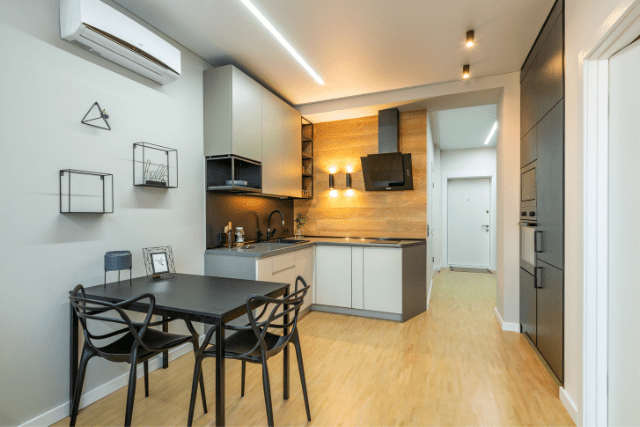
Decide Your Lighting Goals
| Goal | Description |
| Task lighting | Lighting is designed to illuminate specific tasks, such as cooking, cleaning, or food prep. |
| Ambiance | The overall mood or atmosphere created by the lighting in a space. |
| Energy efficiency | The extent to which a lighting fixture uses energy efficiently is often measured in terms of watts per light output unit. |
| Personalization | The ability to customize the lighting in a space to reflect the personal style and taste of the owner. |
| Safety | The extent to which a lighting fixture is safe to use, with minimal risk of electrical issues or malfunctions. |
| Cost | The financial cost of acquiring and installing new lighting fixtures. |
| Maintenance | Ambience |
Choosing the right fixtures
When choosing the right fixtures for your kitchen lighting upgrade, there are several factors to consider. These include:
Style: The fixtures you choose should match the overall style of your kitchen and home. For example, if you have a modern kitchen, you might select sleek and minimalist pendant lights, while a traditional kitchen might be better suited to a chandelier or sconces.
Size: The size of your fixtures should be appropriate for the size of your kitchen. A large, open kitchen might be able to handle larger fixtures, while a smaller kitchen might be better suited to smaller, more delicate lights.
Functionality: Consider the tasks you perform in your kitchen and choose fixtures that will provide the right light for those tasks. Under-cabinet lights, for example, are an excellent choice for task lighting, while pendant lights are a good option for ambient lighting.
Energy efficiency: Energy-efficient fixtures can save money on energy bills and are better for the environment. Look for Energy Star-certified fixtures that use LED bulbs, which are more energy-efficient than traditional incandescent bulbs.

Installing your new fixtures
Once you’ve chosen the right fixtures for your kitchen lighting upgrade, it’s time to install them. Here are a few tips to help you get started:
Turn off the power: Before you begin any electrical work, turn the power to the circuit you’ll work on. This can usually be done by flipping the circuit breaker’s switch or unplugging the relevant fuse.
Please read the instructions: Each fixture will come with instructions, so read them carefully before beginning the installation. This will help you understand your fixtures’ specific requirements and ensure they are installed correctly.
Get the right tools: You’ll need a few essential tools for installing your new fixtures, including a drill, screwdriver, wire stripper, and wire nuts. If you’re uncomfortable working with electricity, it’s a good idea to hire a professional electrician to handle the installation.
Install the mounting hardware: Most fixtures require mounting hardware installed on the ceiling or wall. Follow the instructions carefully to ensure that the hardware is installed securely.
Connect the wires: Once the mounting hardware is in place, it’s time to connect the cables. Most fixtures will have two wires, one for live power and one for neutral. Connect the live wire to the live wire on the fixture and the neutral wire to the neutral wire on the fixture; if you’re unsure which wire is which, refer to the instructions or consult an electrician.
Install the fixtures: With the wires connected, you can install them. Follow the instructions carefully to ensure they are securely in place and correctly aligned.
Test the lights: Once the fixtures are installed, turn the power back on and test the lights to ensure they are working correctly. If you encounter any issues, refer to the instructions or consult an electrician.
Adding dimmer switches or other controls
It can be a great way to customize the ambience and functionality of your kitchen. Dimmer switches allow you to adjust the brightness of your lighting, which can be especially helpful for creating the perfect mood or setting for different occasions. For example, you might want brighter lighting while preparing food but a softer, more relaxed ambience for dinner parties or casual gatherings.
In addition to dimmer switches, there are many other types of controls that you can consider adding to your kitchen lighting. These may include timers, sensors, or remote controls, allowing you to quickly turn your lighting on and off or adjust the brightness from a distance.
Installing dimmer switches or other controls is usually a relatively simple process and can be a cost-effective way to add convenience and flexibility to your kitchen lighting. Follow the manufacturer’s instructions and any local building codes when installing these controls.
Maintenance and care
With your new kitchen lighting installed, taking good care of your fixtures is essential to ensure they last for many years. Here are a few tips for maintaining your kitchen lighting:
Clean the fixtures regularly: Dust and dirt can build up on your fixtures over time, so be sure to clean them regularly to keep them looking their best. A soft cloth and a mild cleaner should be sufficient for most fixtures.
Replace bulbs as needed: It’s important to replace bulbs as soon as they dim or burn out. This will help ensure that your fixtures always provide the right amount of light and will also help extend the life of the fixtures themselves.
Check for loose connections: Over time, connections can loosen or become damaged, which can cause issues with your lighting. Regularly check your fixtures for loose connections and tighten or repair them as needed.
Avoid harsh chemicals: Some cleaners and chemicals can damage your fixtures or cause them to deteriorate over time. Use only mild cleaners and avoid harsh chemicals near your fixtures.
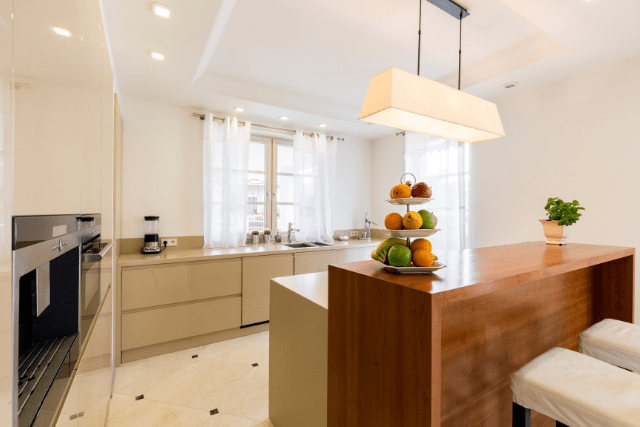
Frequently Asked Questions
How do I determine my kitchen lighting needs?
Consider your tasks and how much light you need to determine your kitchen lighting needs. Think about the overall ambience you want to create in your kitchen, and consider any energy efficiency or personalization goals you may have.
What are some different types of kitchen lighting fixtures?
Standard kitchen lighting fixtures include pendant lights, chandeliers, under-cabinet, and recessed lights. Other options may consist of track lighting, sconces, or wall-mounted fixtures.
Can I install new lighting fixtures myself?
Depending on the complexity of the installation and your level of expertise, you may be able to install new lighting fixtures yourself. However, if you are uncomfortable with electrical work or unsure how to proceed, hiring a professional electrician to handle the installation may be safer.
How do I choose the best lighting fixtures for my kitchen?
When choosing lighting fixtures for your kitchen, consider your lighting goals and your kitchen’s overall style. Look for fixtures suitable for the intended use (e.g., task lighting, ambient lighting), and consider factors such as size, function, and energy efficiency.
How do I maintain my new kitchen lighting fixtures?
To maintain your new kitchen lighting fixtures, follow the manufacturer’s instructions for cleaning and care. This may involve regularly dusting or wiping down the fixtures and replacing bulbs or other components. It’s also a good idea to periodically check the fixtures for any signs of damage or wear and to address any issues promptly to ensure the safety and reliability of your lighting.
Conclusion
Upgrading your kitchen lighting can significantly impact your kitchen’s overall look and feel. New lighting fixtures can add style and personality to your kitchen and help complement the room’s overall design. Proper lighting can also improve the functionality of your kitchen, making it a more efficient and enjoyable space.
Planning and carefully considering your kitchen lighting needs can help you get the most out of your upgrade. This may involve assessing your current lighting, determining your lighting goals and requirements, choosing new fixtures that meet those needs, and properly installing and maintaining your new lighting.
By following a comprehensive process like this, you can be confident that your upgraded kitchen lighting will benefit you.

